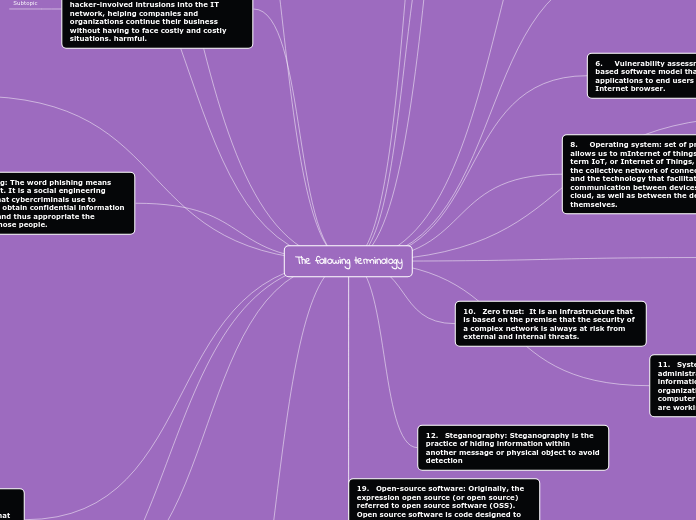The following terminology
1. Virtual private network: is a pseudo-device driver and its kernel extension that allows LVM to consider the physical volume located at the remote site as another local physical volume, even though the actual data I/O operations are performed at the remote site.
Mario saves his report on a Virtual Private Network to protect company information.
2. Troubleshootin: Problem solving is the process by which you find a solution to a specific problem or conflict.
3. Dark wed: is the hidden set of Internet sites that can only be accessed through a specialized web browser. It is used to keep Internet activity private and anonymous, which can be useful in both legal and illegal applications.
Search the dark web for interesting and questionable things
4. Blockchain: The term blockchain can be literally translated as “chain of blocks.” In this chain, each block is full of data, that is, the information is recorded and grouped into blocks, and each block functions as a link.
For each programming code when using the float, the text Blockchain must be placed
5. Drone: refers to any unmanned aerial vehicle that is controlled by a human pilot or by a computer with preconfigured commands.
Subtopic
6. Vulnerability assessment: is a cloud-based software model that delivers applications to end users through an Internet browser.
8. Operating system: set of programs that allows us to mInternet of things (IOT): The term IoT, or Internet of Things, refers to the collective network of connected devices and the technology that facilitates communication between devices and the cloud, as well as between the devices themselves.
9. IP Address: stands for “Internet protocol,” which is the set of rules that govern the format of data sent over the Internet or local network. In essence, IP addresses are the identifier that allows information to be sent between devices on a network.
10. Zero trust: It is an infrastructure that is based on the premise that the security of a complex network is always at risk from external and internal threats.
11. System administrator: Systems administration is the work performed by information technology (IT) experts for an organization. Their job is to ensure that computer systems and all related services are working well.
12. Steganography: Steganography is the practice of hiding information within another message or physical object to avoid detection
13. Ransomware: Ransomware, in computing, is a type of malware or malicious code that prevents the use of the equipment or systems it infects. The cybercriminal takes control of the infected computer or system and “hijacks” it in various ways, encrypting the information, locking the screen, etc.
14. Plataformas a service(PaaS): Platform as a Service (PaaS) is a comprehensive cloud environment that includes everything developers need to build, run, and manage applications, from servers and operating systems to networking, storage, middleware, tools, and more.
15. Spoofing: Spoofing is a set of techniques used by attackers to impersonate a trusted person or entity and trick victims into obtaining information
16. Security architect: Security Architects design, develop and implement systems that prevent malware infiltration and other hacker-involved intrusions into the IT network, helping companies and organizations continue their business without having to face costly and costly situations. harmful.
Subtopic
